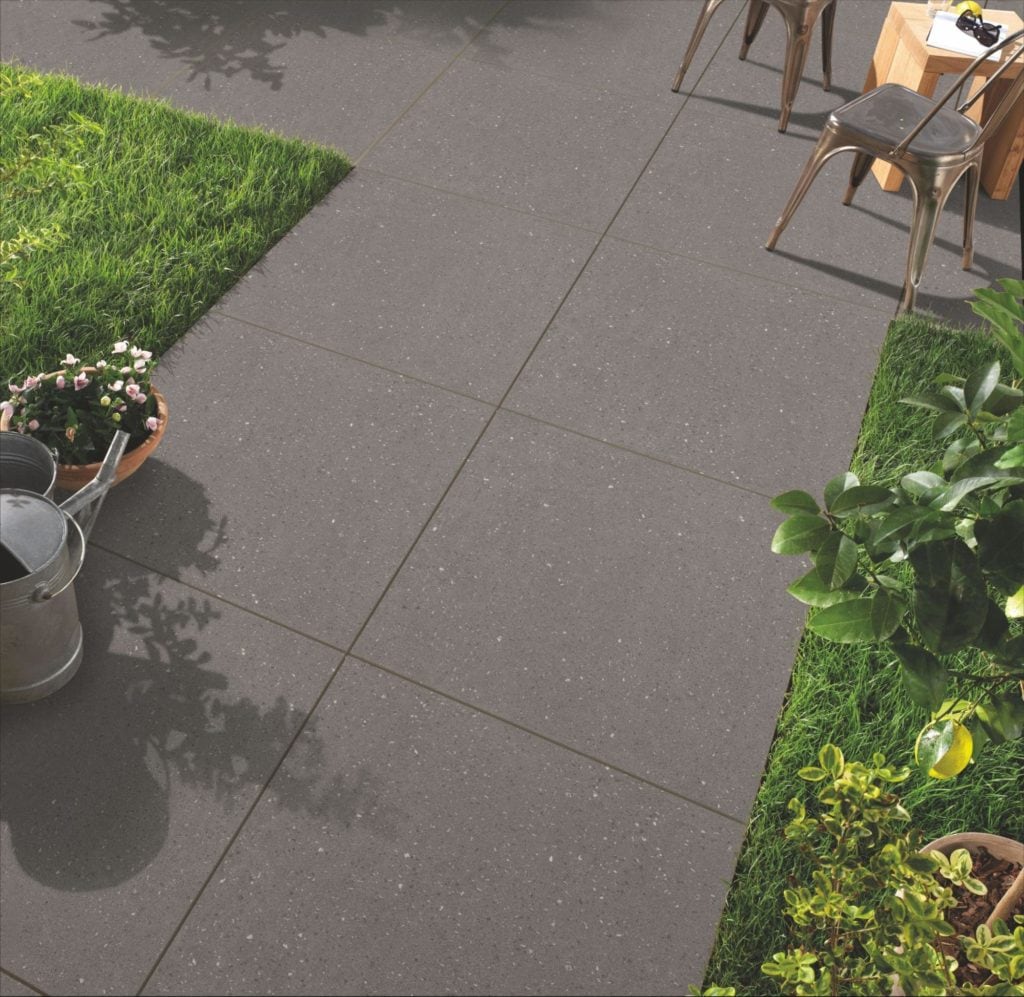Including some garden areas in your patio is a great way to change up the aesthetic and keep fresh fruit and/or veggies on hand. It will make your patio design unique and can help add some natural greenery to the surrounding landscape.

When it comes to implementing garden areas, though, there are a few materials you should consider for paving. These materials each have their pros and cons, so in case you’re in need of garden paving options, let’s go over a few of the best:
Concrete Pavers
Concrete is one of the most common materials used in garden patios. Poured concrete is the most popular choice, but many opt for concrete slabs or concrete pavers as well. Concrete has a variety of style options, since it can be colored or imprinted with graphics and designs. It can also be stamped to look like other materials, such as granite.

As far as maintenance goes, concrete needs to be periodically resealed and resurfaced. Resealing should be done every 5 years and resurfacing every 10. Concrete can be vulnerable to cracking in freeze/thaw cycles and does not hold up well in extreme cold. The installation process for concrete is usually very lengthy and can take many days, which adds to the cost of labor.
Brick
Brick is another popular option for garden paving. Brick has a unique look that some homeowners gravitate towards. It gives off an earthy, natural vibe that tends to pair well with adornments like garden plants. Brick can take longer than most materials to install because each brick has to be done individually. Brick needs to be resealed and resurfaced often to prevent moisture intrusion.

Brick is not known for being very durable. It chips and deteriorates easily. As far as cost goes, it’s one of the more expensive types of garden paving ideas, but many are willing to pay for the unique aesthetic that only brick can provide.
Natural Stones
Natural stones like granite, flagstone, limestone, sandstone, and bluestone make an excellent choice for a garden. These materials are more expensive than concrete or brick but they have a look that’s hard to mimic. They can be installed in slab form but are not found in paver form, often because of their fragility when cut too thin.
Natural stones need regular resealing just like most other impermeable materials. They can also be vulnerable to temperature extremes and will eventually wear down over time under foot traffic and weather conditions.
Permeable Pavement
If you want the best garden paving design possible, permeable pavement is likely going to be the solution. Other types of materials are often installed without permeability as a concern which can lead to bigger problems down the road.

Concrete slabs and patios without permeability end up with moisture that sits on the surface. Eventually, this moisture can work its way into the surface and do damage. Garden plants usually need a lot of water, so having permeable materials around your garden is an environmentally-friendly way to extend the lifespan of your pavement and reduce drainage concerns as well.
TRUEGRID permeable pavers, for instance, will last up to 60 years with almost no maintenance. They never need to be resealed or resurfaced, and only require vacuuming and/or a spray down every now and then. Permeable pavers make paving a garden DIY a quick and easy project, with installation able to be completed in as little as one day.
TRUEGRID PRO LITE and TRUEGRID PRO PLUS both have 98%-permeability, meaning they can drain the water from your garden, as well as stormwater with ease. Installing TRUEGRID permeable pavers for your garden patio also means it will be safer. Without any standing water around to make things slippery, you should be able to enjoy a dryer patio overall, making slips and falls less likely.

The installation of a TRUEGRID permeable patio is incredibly simple. The entire process is often able to be completed in hours and requires little heavy equipment. First, the area must be excavated to a depth of about 12 inches before a piece of fabric is laid at the bottom of the excavated pit.
Then, the pit is filled with gravel and compacted until level. Next, the interlocking pavers are snapped together as easily as LEGO blocks, with more gravel being poured over them and compacted into the pavers with a vehicle or heavy roller. This weighs the pavers down and prevents them from moving, which completes the installation process.
Garden Patios Require a Special Paving Solution
Garden patio paving needs to have certain qualities if you want it to last long. If you want the most durable, permeable, eco-friendly, stylish, and long-lasting garden pavement on the planet, get in touch with TRUEGRID today for a free quote.



